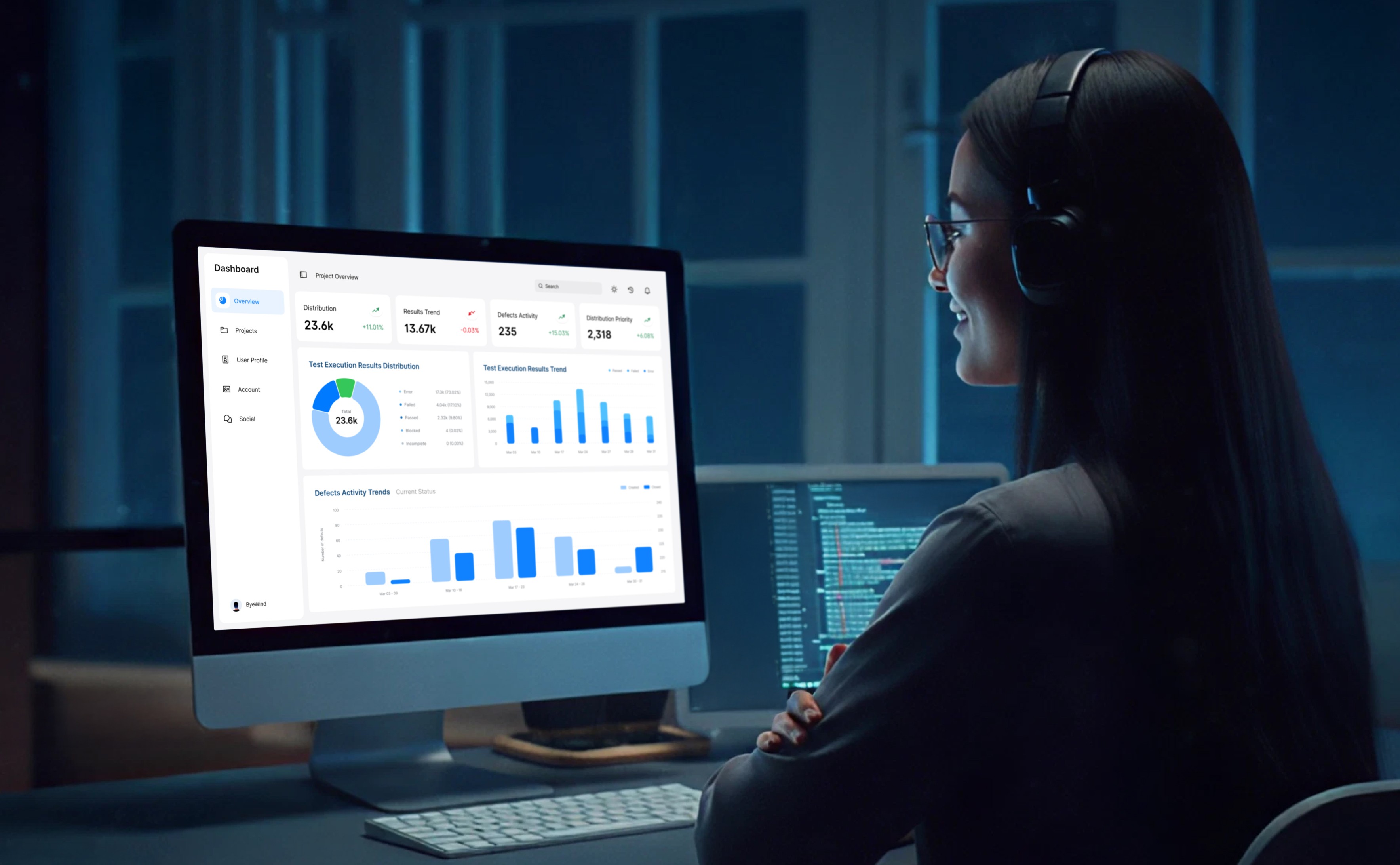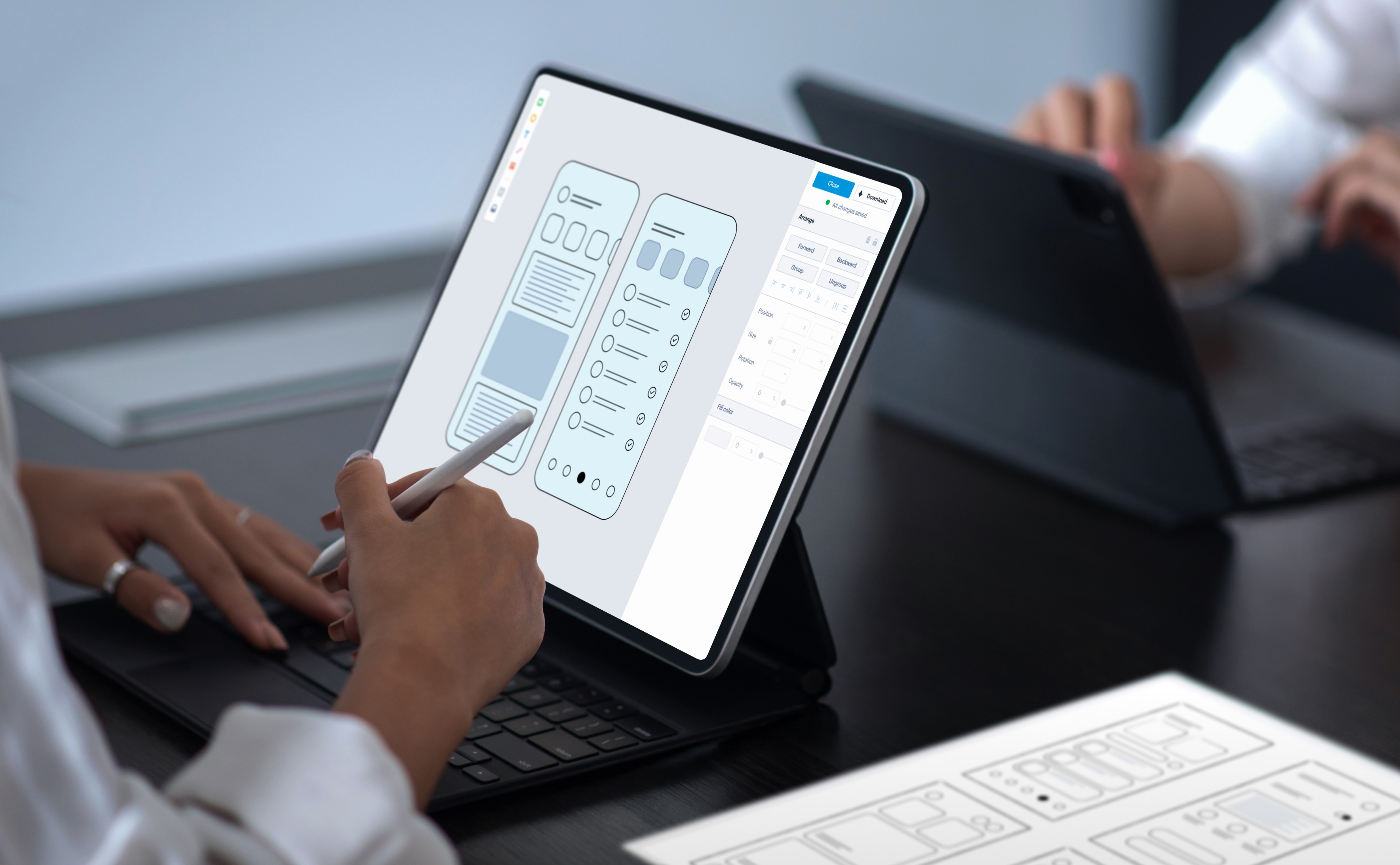What Is Shopify Headless Commerce: A Complete Guide for 2026

- Why Headless E-Commerce Matters In 2025?
- What is Shopify Headless Commerce?
- Headless Shopify vs traditional Shopify: What’s the difference?
- How Headless Shopify Works
- Implementing Headless Architecture on Shopify: Essential Tools and Strategies
- The Pros and Cons of Headless Shopify
- Considerations Before Committing to Shopify Headless E-commerce
- Real-World Examples of Shopify Headless Stores
- How Much Does It Cost to Build a Shopify Headless Commerce Store?
- Conclusion
- Why Headless E-Commerce Matters In 2025?
- What is Shopify Headless Commerce?
- Headless Shopify vs traditional Shopify: What’s the difference?
- How Headless Shopify Works
- Implementing Headless Architecture on Shopify: Essential Tools and Strategies
- The Pros and Cons of Headless Shopify
- Considerations Before Committing to Shopify Headless E-commerce
- Real-World Examples of Shopify Headless Stores
- How Much Does It Cost to Build a Shopify Headless Commerce Store?
- Conclusion
The global headless commerce market is estimated to be valued at US$1.74 Bn in 2025 and is expected to reach US$7.16 Bn by 2032, exhibiting a compound annual growth rate (CAGR) of 22.4% from 2025 to 2032.
The 2025 e-commerce scenario demands a highly personalized shopping experience, lightning-fast site performance, and seamless interaction across multiple touchpoints. Traditional e-commerce models cannot withstand these expectations, hence competitive headless online stores are reigning the game. Shopify Headless Commerce is one such transformative approach that is redefining the way modern businesses are building and scaling their digital presence.
If we take a look at the evolution of e-commerce, in the early 2000s, building a digital store meant picking up a full-stack platform where both the frontend and backend would be bound tightly together. This monolithic approach worked well at the start, but lost its charm as customer expectations grew.
Today, consumers are not just tied to desktop shopping experiences, but are exploring across mobile devices, social media, AR/VR, and even voice assistants. In such a landscape, businesses require a decoupled, flexible architecture like headless commerce that allows for rapid integration with emerging channels and technologies.
This blog is designed to provide detailed guidance on Shopify Headless E-Commerce, how it works, and why you should be adopting it for your business success in 2025.
In a Nutshell
Shopify Headless Commerce is a flexible and modern e-commerce approach that decouples your store’s frontend from the Shopify backend. Businesses can utilize this model to deliver dynamic, customized shopping experiences while still relying on Shopify’s robust backend to manage products, orders, and checkouts. This decoupled e-commerce setup allows design freedom, faster performance, and content delivery across multiple platforms. It’s perfect for brands seeking to leverage customer experiences beyond traditional Shopify limitations.
Why Headless E-Commerce Matters In 2025?
Headless E-Commerce, in simple terms, refers to an architectural approach that separates the frontend, i.e., the head, from the backend of an e-commerce platform. This framework allows businesses to enjoy immense creative freedom in delivering exceptional and personalized user experiences across various touchpoints, all while maintaining consistent and stable backend functionality.
With the advent of technologies like AI personalization, voice search, the emergence of omnichannel retailing, and advanced modern web applications, the year 2025 is crucial in digital commerce. These are no longer an option but the basic customer expectation. Traditional e-commerce setups have their limitations and often fail to deliver exceptional and consistent brand experiences in such a competitive environment. That's where headless e-commerce solves the problem.
Headless e-commerce offers:
- Agility and speed in launching new frontend designs or features.
- Flawless omnichannel retailing.
- Superior performance with lightweight and customised frontends.
- Improved flexibility for growing brands.
Hence, going headless guarantees consistent performance, rapid innovation, better customer experience, and future-proofing your digital storefront.
What is Shopify Headless Commerce?
Headless e-commerce, as we have already discussed above, is an architecture that decouples the frontend from the backend, giving digital storefronts full freedom and control over design, customer-brand experience, and tech stack while still relying on the powerful back-end capabilities of Shopify. When it comes to a traditional Shopify store, the frontend and backend are tightly bound together. While this approach is efficient and uses Shopify’s native themes, templates, and liquid language, it tends to have lots of limitations from a 2025 competitive e-commerce perspective.
Now, what makes Shopify suitable for Headless e-commerce? Shopify offers a robust API first infrastructure that provides speed, flexibility, and scalability. The Shopify Storefront API and Admin API allow developers to access and retrieve product data, customer information, cart, checkout details, and more in real time, all the while enabling fully customized frontend experiences using modern React, Vue, or Next.js frameworks. While the admin API manages all the backend operations, like orders, inventory, and customer records, Shopify’s Hydrogen framework offers a React-based beginner kit that is designed specifically for headless digital stores. Adding to these, Shopify’s global hosting solution, Oxygen, ensures secure and fast deployment.
Top brands like Allbirds are building fast, headless storefronts using Shopify Hydrogen, a React-based framework that allows easy development and deployment on Shopify’s Global hosting solution, Oxygen.
In short, Shopify headless e-commerce gives you the freedom to develop anything you prefer on the front, while still powering the backend logic. This unique, decoupled architecture empowers businesses to build exceptional, high-performing digital storefronts at the same time, incorporating the excellent, scalable, and functional aspects of Shopify.
Thinking of going headless with Shopify?
Reach out to usLoading...
Headless Shopify vs traditional Shopify: What’s the difference?
Here’s a comparison table illustrating the key differences between Traditional Shopify and Headless Shopify:
| Feature | Traditional Shopify | Headless Shopify |
|---|---|---|
| Frontend | Built-in templates and themes (Liquid). | Custom (React, Next.js, Vue, etc.). |
| Backend | Coupled tightly with the frontend. | Decoupled and accessed via APIs. |
| Performance Optimization | Partial control. | Complete control. |
| Flexibility | Limited customizations possible. | Allow complete customization. |
| Developer Stack | Mostly Liquid and Shopify Stack. | Use any modern JavaScript framework. |
| SEO Handling | Shopify’s built-in tools. | Custom SEO strategies with SSR/SSG. |
| Use Case | Ideal for simple to moderate complexity. | Excellent for high-scale, complex, and innovative setups. |
How Headless Shopify Works
In a traditional Shopify setup, the frontend is tightly coupled to the backend, limiting the overall flexibility in UX and design. Headless Shopify discards this approach and allows businesses to build fully customized e-commerce architectures.
Leading D2C meat brand Butcher Box used a phased approach to migrate to Shopify Headless using Hydrogen and Oxygen. They enhanced their simplicity and conversion rates by switching to Shopify, while maintaining the exact same UX for their customers.
The Shopify headless architecture can be divided into three: the frontend, the backend, and the storefront APIs that connect the two. APIs (Application Programming Interfaces) form the core of this headless approach. It serves as messengers that allow communication between various software components. In a headless Shopify architecture, the frontend (mobile applications, website, kiosks, or voice assistants) sends necessary requests to the backend (server layer of the architecture that manages the products, customers, and transactions) via robust APIs and Software Development Kits (SDKs).
The APIs help retrieve necessary data like product details, customer data, order status, payment processes, and inventory levels. Once the data is received, the frontend composes it in a user-friendly manner that appears suitable to the device or platform. This seamless exchange of important data helps businesses to give out a highly personalized and consistent shopping experience to customers across different channels.
The GraphQL Storefront API enables developers to gather commerce-related information necessary for custom frontends. It facilitates dynamic data retrieval by allowing developers to request exactly what they need and create personalized Shopify experiences. The Admin API further allows complete programmatic control over store operations like managing products, collections, customer data, and payments. For iOS apps, a Shopify open-source SDK could be used to link the backend to a custom frontend. Additionally, SDKs like the React-based framework “Hydrogen” and Headless CMS integration tools facilitate the development of fast, efficient, and responsive storefronts.
The APIs act as messengers that help transmit data between the frontend and backend, enabling lightning-fast user experiences. Hence, by leveraging the potential of various APIs and SDKs.
Implementing Headless Architecture on Shopify: Essential Tools and Strategies
1. Storefront API
The Storefront API forms the cornerstone of any headless commerce Shopify implementation. This sophisticated GraphQL API allows developers to seamlessly fetch the required data, such as product info, customer data, collections, cart details, pricing, and checkout details, which ensures a faster and efficient frontend performance. Unlike Shopify’s traditional liquid templates, the Storefront API facilitates seamless communication with the backend. It supports advanced features like multi-currency, localization, customer authentication, and filtering options, allowing businesses to offer customers a truly global, highly personalized shopping experience.
2. Shopify Hydrogen
Shopify Hydrogen is a frontend web development framework based on React. The framework is specifically designed for faster building of custom storefronts and comes packed with pre-built components, ready-to-use templates, and commerce-specific hooks that sync well with Shopify’s APIs.
We could use prebuilt components like cart, pagination, and search, as well as ready-to-use code for products, collection data fetching, or automatic SEO schemas generation. Choosing Hydrogen literally saved us months of custom development.
Tom Mittlener, Senior Developer at Nour Hammour
Hydrogen has a developer-friendly structure and offers features like Server-side rendering (SSR) support and caching that enable developers to build dynamic and fast-loading storefronts. Shopify Hydrogen also has seamless data retrieval and display capabilities because of its smooth integration with Storefront APIs. Overall, it enables faster development while maintaining customizability.
3. Shopify Oxygen
Shopify Oxygen is a native hosting platform optimized specifically for headless storefronts developed using Hydrogen. Oxygen enables the smooth deployment and management of headless stores, liberating businesses from depending on third-party hosting solutions like Netlify or Vercel. It offers zero-configuration, globally distributed hosting that facilitates faster page loadings and improved SEO performance. Features like preview deployment, rollbacks, or built-in custom domain support help teams to collaborate and deploy efficiently.
The Pros and Cons of Headless Shopify
Here is a clear overview of the advantages and disadvantages of going headless with Shopify.
| Feature | Pros | Cons |
|---|---|---|
| Customization | Full control over frontend customization. Enables unique and branded interfaces across websites, mobile apps, and other digital platforms. | Requires advanced technical expertise. Also, cannot use Shopify’s default themes or drag-and-drop builder. |
| Performance | Enhanced and optimized performance. Faster page loads with frameworks like React & Vue. | Performance depends highly on the development and maintenance of the frontend. |
| Scalability | Greater scalability and adaptability to business needs, complex catalogs, etc. | Complex infrastructure compared to a traditional Shopify setup. |
| Omnichannel Flexibility | Seamless integration across multiple channels-web, mobile, IoT, kiosks, POS). | Longer time-to-market compared to standard Shopify. |
| SEO & Content Management | Improved SEO with Server-side rendering (SSR). Integrates seamlessly with a headless CMS like Contentful or Sanity. | Need to manage SEO manually. Require external tools for blogging and content pages. |
| API-driven Architecture | Access to robust APIs (Storefront API, Admin API) and SDKs, enabling efficient data fetching | Dependency on Shopify’s API availability and documentation. Also, rates apply for API usage. |
| Cost | Potential for good ROI through better performance and conversions. | Higher costs of development, management, and running. Need continuous technical support and maintenance. |
| Technology Freedom | Liberty to integrate with third-party tools, CMSs, and custom features. | Involves complex infrastructure and deployment processes. |
Considerations Before Committing to Shopify Headless E-commerce
Before making the move to a headless Shopify E-Commerce platform, it's essential to evaluate several key factors to ensure that this model aligns best with your business goals and capabilities.
1. Long-Term Vision and Goals
If your long-term vision is to scale rapidly and launch on multiple platforms (web, mobile apps, kiosks), then headless e-commerce could be a great option. The architecture is best suited for businesses that focus on scalability, adaptability, personalized customer experiences, and expansion across various digital touchpoints. If your long-term vision involves reaching international markets, omnichannel retail, and customizing user experiences, then Shopify headless offers you the perfect flexibility. However, if your business needs are simple, then the complexity of Headless might be too heavy to handle.
2. Technical Expertise & Resources
The implementation and maintenance of a Headless architecture demands highly skilled developers familiar with API integrations, frontend frameworks like React, Vue, etc, and modern deployment practices. Analyse your in-house technical expertise or partner with a reliable Shopify Development company like WAC. Without the right technical expertise, the project may face delays, bugs, and lots of overhead maintenance.
3. Budgetary Considerations
Headless Shopify development is expensive compared to traditional Shopify due to custom coding, infrastructure, and third-party integrations. Keep in mind the expense factors like development, hosting, infrastructure, maintenance, and support services. Evaluate whether your budget aligns with the scope of the headless architecture.
4. Functionality Requirements
The headless architecture is ideal if your store prioritizes high levels of customization, API integrations, excellent omnichannel retail experiences, advanced filtering, and dynamic content. The flexibility offered by headless Shopify is top-notch and allows features to be built from scratch, matching the workflows. Carefully assess if your business needs these functionalities, as most of the headless features require additional development efforts and third-party integrations.
5. Maintenance and Support
A headless setup demands consistent updates, bug fixes, and performance optimization of the front-end stack, APIs, and other custom components. In traditional Shopify, updates and security aspects are automatically handled, whereas in headless environments, the responsibility falls on your team. Long-term technical support is crucial to prevent security issues and maintain a good User Experience.
6. Time Commitment
The development cycle for headless storefronts is longer due to their custom requirements and complexities. Unlike a traditional Shopify store with built-in themes and templates, you will need to face a lengthy planning and execution phase. The project timelines can extend across weeks or months, depending on your business needs and the efficiency of your team. In addition, also expect extra investments for continuous maintenance, testing, and updating your frontend experience.
Real-World Examples of Shopify Headless Stores
1. Kotn

Kotn, the sustainable D2C apparel brand based in Canada, utilized Shopify’s Headless capabilities to create content-rich shopping experiences by overcoming potential bottlenecks. In the headless setup, Kotn built a storytelling frontend with Next.js while Shopify handled the backend checkout and commerce logic. In total, the brand's seamless blend of storytelling with shopping increased conversions and engagements.
Shopify covers 80% of our needs, and I think that’s common across all merchants. It’s that next 20% where headless comes in and where we really spend our time. What we’re trying to do is let Shopify handle the stuff they do so well, and we can focus on what makes us unique. That’s where we’ve really gone with our thinking around being headless.
Benjamin Sehl, Co-Founder, Kotn
Key Achievements:
- Elevated storytelling ability, backed by editorial-style product pages and dynamic visual layouts.
- Faster page loading and optimized mobile performance proved great for engaging conscious, on-the-go shoppers.
- API integrations with third-party tools facilitated content management, inventory control, and analytics.
We went with a headless architecture because it brings a lot of the customizations we wanted to control directly to our fingertips.
Rares Crisan, Director of Engineering, Kotn
The implementation of headless architecture proved right for Kotn, as the brand began to experience improved organic traffic and reduced bounce rates. Thanks to the faster page loads and seamless SEO flexibility. Moreover, the storytelling feature of the brand helped in heightened customer retention and in boosting the average order value.
2. Taschen

The German-based art book publisher Taschen embraced the headless approach to create a visually rich, performance-optimized brand experience. The brand’s frontend is built on a custom React stack, while the backend runs on Shopify. The traditional Shopify setup proved too restrictive for the brand, with its requirement to have a visually abundant storefront featuring custom UX elements.
Shopify Plus improved the customer experience, our sense of control, and enabled new products to come into play.
Gaëlle Mehanna, E-Commerce Director, Taschen
Key Achievements:
- High-quality visual design using a custom frontend, uplifting the overall brand outlook.
- Improved global presence with the creation of global storefronts that feature localised content, languages, and currencies.
- Flawless integration of CMS platforms and inventory systems, enhancing editorial control and retail flexibility.
With the headless e-commerce framework, Taschen successfully combined high-performance e-commerce functionality with luxury brand aesthetics. They were able to achieve fast page loading, reduced cart abandonments, improved conversions, especially from international customers, and deliver a premium brand experience to customers.
Want to build the next standout Shopify brand?
Let’s talkLoading...
How Much Does It Cost to Build a Shopify Headless Commerce Store?
The cost of developing a Shopify Headless e-commerce storefront can differ based on your business goals, development needs, design complexity, and the tech stacks and integrations used. Unlike a standard Shopify setup, the headless architecture demands a custom frontend, API configurations, and other third-party services, all contribute to the final price.
Factors Influencing The Final Price
- Level of personalization (basic storefront vs high-end experience).
- Number of integrations (e.g., CMS, search, personalization engines).
- Content requirements (blogs, shoppable stories, interactive pages).
- Cart/checkout customization (only available with Shopify Plus).
- Team structure (in-house vs outsourced headless development).
For a mid-sized project, depending on the levels of customization and other headless feature sets used, the project cost can range between $50,000–$500,000+.
*Note: The pricing provided above is an estimate and serves as a general guide. The actual investment may differ depending on factors like project complexity, levels of customization, third-party integrations, and development scope.
Conclusion
Shopify headless is becoming the default in the modern digital world. This headless architecture is a game-changer that empowers businesses to build flexible and high-performing shopping experiences. The key advantages of this architecture include faster load times, next-level UX, customized shopping experiences, omnichannel scalability, and seamless integration with modern development frameworks like React, Hydrogen, or Next.js.
However, the headless setup can appear complex compared to traditional Shopify, with increased cost of development and maintenance responsibilities, making it suitable for mid-level to enterprise-level brands seeking to scale drastically. Hence, businesses must carefully weigh the potential pros and cons of this setup before making the leap.
At WAC, we specialize in building captivating e-commerce stores with the best Shopify development services. Being an established Shopify development company, we focus on building high-speed, scalable, innovative, and future-ready Shopify and Shopify Plus storefronts. Whether you are new to headless architecture or want to optimize your existing Shopify architecture, we deliver robust and custom services, uniquely tailored to your brand's needs.
Hire our expert Shopify developers to guide you through every step of your headless e-commerce journey and successfully build a competitive online business store.
Want a future-proof Shopify store?
Let's talkLoading...
- BigCommerce vs Shopify: Which E-commerce Platform Is Right for You in 2026?
- Top Shopify Alternatives to Consider in 2026
- Top Brands Using Shopify: Behind the Screens of Success
- Shopify vs. Shopify Plus: Which Plan Is Right for You?
- Magento (Adobe Commerce) Vs Shopify: Which Platform to Choose for Your Store
Discover Digital Transformation
Please feel free to share your thoughts and we can discuss it over a cup of tea.









